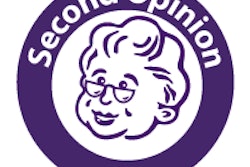Lung cancer screening with CT is far more efficient when screening criteria are refined with additional patient risk factors to identify the individuals at highest risk of developing lung cancer who would benefit most from screening, according to a study published in the July 18 issue of the New England Journal of Medicine.
The researchers analyzed data from the National Lung Screening Trial (NLST) to determine the risk factors that have the strongest associations with lung cancer mortality, comparing mortality reductions in the CT screening arm to the cohort that underwent only chest radiography. When the cohort of 26,000 CT-screened individuals was divided into five risk categories, the authors found that screening prevented far more deaths in the highest-risk quintiles than in the lower-risk categories.
In fact, the number need to screen to prevent one lung cancer death -- a standard barometer of the effectiveness of a screening test -- stood at 161 for the highest-risk individuals. That figure compares favorably to the number needed to screen for one of the most well-known screening tests, mammography, which ranges from 740 to 2,000 women (depending on the analysis used).
Whom to screen?
The landmark NLST demonstrated that CT lung screening could reduce lung cancer mortality by 20% in heavy smokers. The authors wanted to know whether that benefit varied according to the risk of the smokers, according to co-author Hormuzd Katki, PhD, in an interview with AuntMinnie.com.
"What we saw was that those who were at highest risk of lung cancer death also got the most benefit in the trial," Katki said. "Those with the lowest risk actually had a lot fewer deaths."
The group's findings "provide empirical support for risk-based targeting of smokers for such screening," wrote Stephanie Kovalchik, PhD, Katki, and colleagues from the U.S. National Institutes of Health (NIH) and other institutions (NEJM, July 18, 2013, Vol. 369:3, pp. 245-254).
Several professional societies have recommended use of the same criteria for screening as was required to enter NLST, i.e., age 55 to 74 years, a minimum of 30 pack-years of smoking history, and smoking cessation no more than 15 years prior to screening.
But some have advocated for a more refined risk-assessment process that would account for additional risk information not considered in the NLST entry criteria. There is evidence that it could work: Indirect calculations of screening benefits projected a tenfold increase in the number of deaths prevented among the highest-risk participants in NLST. However, there is a lack of empirical evidence showing that the theoretical grounds for tailoring screening recommendations actually translate into additional lives saved using smarter screening criteria.
In search of the highest risk
The researchers aimed to determine whether the benefits and harms of low-dose CT screening in NLST differed depending on the participants' risk of lung cancer death before screening, which they estimated using a prediction model.
"Across risk groups for lung cancer death, we evaluated the effect of low-dose CT screening on the number of prevented lung cancer deaths, the number of participants with false-positive results, and the number of participants who would need to be screened to prevent one lung cancer death," Kovalchik and colleagues wrote.
Based on this prescreening risk, the researchers analyzed variations in efficacy, the number of false-positive results, and the number of lung cancer deaths prevented among the 26,604 NLST participants who underwent low-dose CT screening, comparing them to the 26,554 participants who underwent only chest radiography.
Predictors for lung cancer death were chosen from previously identified demographic and clinical risk factors for lung cancer, including age, smoking history, time since quitting smoking, family history, and body mass index. The resulting model was validated using outcomes data from NLST-eligible and ineligible smokers from the Prostate, Lung, Colorectal, and Ovarian (PLCO) Cancer Screening Trial. The participants were stratified into five quintiles for predicted five-year risk of death from lung cancer: Quintile 1 had the lowest risk and quintile 5 had the highest risk.
The results showed that the number of lung cancer deaths (per 10,000 person-years) prevented in the CT screening group versus the radiography group increased according to risk quintile. The number rose from 0.2 deaths in quintile 1 to 3.5 deaths in quintile 2, 5.1 deaths in quintile 3, 11.0 deaths in quintile 4, and 12.0 deaths in quintile 5 (p = 0.01 for trend).
Across risk quintiles, there was a significant decrease in the number of participants with false-positive results per screening-prevented lung cancer death: 1,648 in quintile 1, 181 in quintile 2, 147 in quintile 3, 64 in quintile 4, and 65 in quintile 5.
The 60% of participants at highest risk for lung cancer death (quintiles 3 through 5) accounted for 88% of the screening-prevented lung cancer deaths and for 64% of participants with false-positive results. The 20% of participants at lowest risk (quintile 1) accounted for just 1% of prevented lung cancer deaths.
Key factors
What did the results show as major factors predisposing the NLST participants to lung cancer death over five years?
"Certainly age is the most important factor, after that pack-years of smoking and the number of years quit were the most important factors," Katki said. "The other factors come in and refine the risk. If, for example, you also have a family history of lung cancer or pre-existing lung conditions, they may have smaller effects. But it turns out that because this model multiplies risks, if you start out with a lot of smoking, these smaller factors can increase the risk meaningfully."
The data revealed interesting new details about the role of risk factors as well. Generally, the presence of more pre-existing lung conditions raises the risk of lung cancer death, but in the cohort's small number of patients with more than two conditions, screening wasn't helpful, the authors wrote.
At baseline, for example, two-thirds of NLST participants had no coexisting pulmonary conditions, about one-fourth had one pulmonary condition, and 11% had two or more conditions. Overall, CT screening was efficacious among participants with no conditions (6.2 CT-prevented lung cancer deaths per 10,000 person-years) or with one pulmonary condition (9.6 CT-prevented deaths), but not among participants with multiple coexisting lung conditions (0.5 prevented deaths).
Thus, in patients with more than three pre-existing lung conditions, "we couldn't see a benefit of lung screening, but it was a very small group, only 10% of NLST participants," Katki said. "More study has to be done."
About half of all diagnosed lung cancers in the CT screening group were stage I tumors, and this proportion held steady across all five risk categories, the authors noted. Nevertheless, because there were so many more lung cancers in higher-risk quintiles, the number of stage I cancers increased significantly along with the risk of lung cancer death: 40 in quintile 1 versus 215 in quintile 5 (p < 0.001 for trend).
The proportion of false-positive results decreased with an increasing risk of lung cancer death: 97% in quintile 1 versus 88% in quintile 5 (p < 0.001 for trend). But once again the number of false positives grew at the higher risk levels.
The harm-to-benefit ratio of screening was measured indirectly by comparing the number of participants with false-positive results to the number of CT-prevented lung cancer deaths. As mentioned, this ratio decreased significantly across risk quintiles, from 1,648 in quintile 1 to 65 in quintile 5 (p < 0.001 for trend).
Meanwhile, the number of participants who would need to be screened to prevent one lung cancer death decreased significantly with an increasing risk of lung cancer death: 5,276 in quintile 1, 1,531 in quintile 2, 415 in quintile 3, and 171 in quintile 4. Only 161 patients would need to be screened to prevent a single cancer death in quintile 5. The numbers compare quite favorably to mammography, which must screen between 740 and 2,000 women (depending on the analysis used) to prevent a single death from breast cancer.
How will it work in practice?
Theoretical frameworks are all well and good, but let's address the human side. Might individuals who were previously eligible for screening under NLST have to go unscreened based on any individualized risk assessment that might be implemented in the future? After all, screening advocacy groups are aiming to broaden, not narrow, screening criteria.
"This idea that we can use a risk calculation to better target the screening of people who are going to benefit is an ongoing and difficult question," Katki said. "We're not ready to do this yet."
But yes, smoking history and demographics -- and maybe a computer application -- would ultimately be used to determine individual risk, he said.
One way to approach the task is to eliminate groups with no significant risk, such as nonsmokers; when the risk is zero, there should be no debate. The debate begins when there is some benefit, "and the question becomes how much benefit, and there are no easy answers to those kinds of questions," Katki said.
"We're hoping that the main value of study is to eventually develop a risk calculator that could be used to better target lung screening in the future," he said. "One issue is that we have longer follow-up of the trial cohort. We have to be sure that these benefits seen over seven years continue to last as long as the person lives. Otherwise, we're putting off lung cancer death and not really stopping it."




















